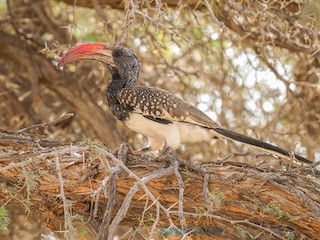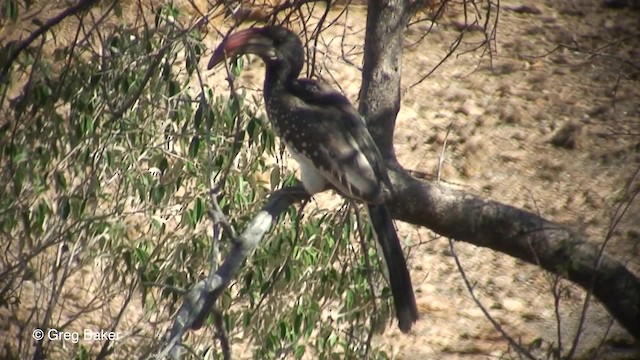Monteiro's Hornbill Tockus monteiri Scientific name definitions
- LC Least Concern
- Names (25)
- Monotypic
Revision Notes
Sign in to see your badges
Species names in all available languages
| Language | Common name |
|---|---|
| Afrikaans | Monteironeushoringvoël |
| Bulgarian | Намибска птица носорог |
| Catalan | calau de Monteiro |
| Croatian | pjegavokrili kljunorožac |
| Czech | zoborožec namibijský |
| Dutch | Monteirotok |
| English | Monteiro's Hornbill |
| English (United States) | Monteiro's Hornbill |
| Estonian | pärl-sarvnokk |
| Finnish | angolantoko |
| French | Calao de Monteiro |
| French (Canada) | Calao de Monteiro |
| German | Fleckentoko |
| Japanese | シロボシコサイチョウ |
| Norwegian | hererotoko |
| Polish | toko plamoskrzydły |
| Portuguese (Angola) | Calau de Monteiro |
| Russian | Намибийский токо |
| Serbian | Monteirov kljunorožac |
| Slovak | toko bodkovaný |
| Spanish | Toco Angoleño |
| Spanish (Spain) | Toco angoleño |
| Swedish | monteirotoko |
| Turkish | Benekli Boynuzgaga |
| Ukrainian | Токо ангольський |
Revision Notes
This account is part of the 8th edition of Roberts Birds of Southern Africa. This project is a joint collaboration between the John Voelcker Bird Book Fund and the Cornell Lab of Ornithology. Mark T. Stanback and G. Derek Engelbrecht revised all aspects of the account. G. Derek Engelbrecht curated the media.
Tockus monteiri Hartlaub, 1865
Definitions
- TOCKUS
- monteiri / monteiroi
The Key to Scientific Names
Legend Overview
Introduction
The Monteiro's Hornbill has the distinction of occupying the driest habitats of any hornbill in the world. Along the Great Escarpment and adjacent rocky hills of central and northwestern Namibia and the southwest of Angola, it ekes out a living in barren, rocky savanna, sometimes receiving less than 100 mm of rain annually. Since its habitat often lacks suitably sized trees for nesting cavities, it typically breeds in rock crevices but will nest in tree cavities or nest boxes when available. The female lays two to eight eggs, and incubation commences with the first-laid egg, resulting in a dominance hierarchy within the brood. In years of above-average rainfall, there typically is sufficient food to raise a large brood to fledge, but the youngest nestlings starve to death in drier years.

- Year-round
- Migration
- Breeding
- Non-Breeding
















































